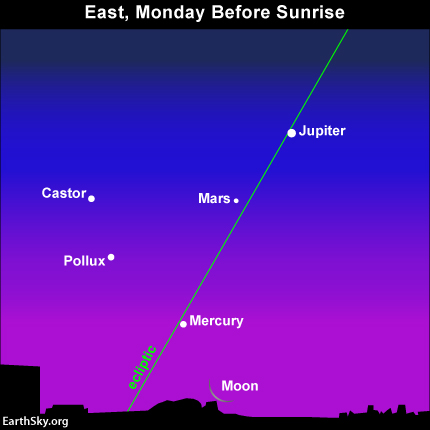Earthsky.org, 8/4/13 -Bruce McClure

Our sky chart shows the eastern sky for about 45 minutes before sunrise at North American mid-northern latitudes (Monday, August 5). Given an unobstructed horizon, clear sky – and possibly binoculars – you just might catch a pale, whisker-thin waning crescent moon in the glow of morning twilight.
At mid-northern latitudes in Europe and Asia, the waning crescent moon shines closer to the planet Mercury, which rises about 90 to 75 minutes before the sun. All other things being equal, the lunar crescent should be easier to spot from the Old World. From Europe and Asia, the thin crescent will be slightly wider than it appears in North America, and moreover, it will rise sooner before sunrise.

